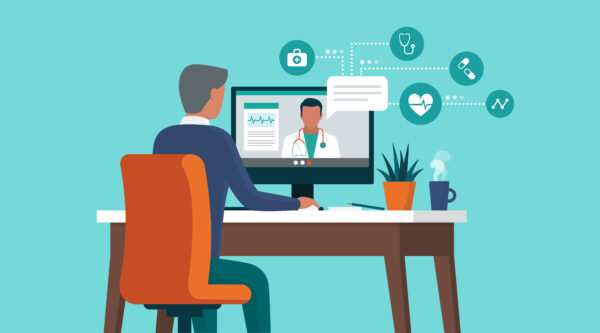The Power of Clean: Enhancing EVS standards at UofL Health – UofL Hospital
Author: Thomas Deringer, PhD, Vice President, Experience
Cleanliness in healthcare isn’t just about appearance—it’s a critical factor in patient safety and trust. In the wake of COVID-19, patients are more attuned to cleanliness in healthcare settings, and have higher expectations and standards for what constitutes “clean.” As the bar for cleanliness has risen, healthcare organizations have needed to adopt stricter hygiene protocols. These include handwashing, sanitizers, and disinfection in public, high-touch areas, with a strong push for masks and personal protective equipment (PPE) to prevent the spread of germs.
Recognizing the shift in patient expectations, the UofL Hospital launched an initiative designed to improve cleanliness and reshape how patients and staff perceive and engage with hygiene practices. UofL Hospital partnered with Crothall Healthcare, a Compass One Healthcare company, to launch the “Power of Clean” campaign, uniting the entire organization around this essential goal. And they saw meaningful results in safety outcomes as well as patient experience scores.
A new approach to cleanliness: Reinforcing patient confidence through innovative initiatives and messaging
Research by Press Ganey, in partnership with the University of Chicago, demonstrated how public perceptions of cleanliness had changed during the pandemic. The question was no longer “is this space clean?” but “do I feel confident that it is clean?”
In short, being clean isn’t enough. Patients must perceive the environment as clean too.
The study identified three key drivers of cleanliness: the assurance of 100% cleanliness, confidence in cleanliness, and courtesy of staff. UofL Health acted quickly on these findings to launch a two-fold strategy that would change how they approached cleanliness.
Defining the objectives of the campaign: A collective effort to elevate cleanliness
The campaign’s objectives might be straightforward, but the vision behind it is ambitious: to transform patients’ perceptions of cleanliness, enhance the overall patient experience (PX), and foster a shared responsibility for hygiene across the entire hospital. UofL Hospital set a clear, measurable goal to surpass the 50th percentile in cleanliness. And currently, they’re at the 54th.
But this campaign was about more than simply meeting a number. It was about making cleanliness a shared responsibility. The Power of Clean called on every staff member, across all departments, to play an active role in maintaining a spotless environment. Through broad engagement and collaboration, the campaign aimed to elevate both the tangible and perceived standards of cleanliness hospital wide.
Actions taken: A comprehensive approach
To bring the Power of Clean campaign to life, UofL Hospital established a dedicated cleanliness committee, which met monthly in the early days, and continues to check in regularly. Led by senior leaders, including UofL Health Chief Nursing Officer (CNO), Vice President of Quality, and patient experience team members, the committee collaborates with the regional PX director from Crothall and the UofL Hospital PX director, along with staff, marketing teams, and nursing units, to align everyone on shared goals.
Key initiatives and messages supporting the cleanliness campaign include:
Personal hygiene kits: Partnering with vendors like PDI (infection prevention) and Innovate Medical (a medical supply packaging company), UofL Hospital created hygiene kits for patients. These kits contain body towelettes, hand wipes, lip balm, sleep masks, and earplugs, and are distributed by patient advocates or environmental services (EVS) staff to new patients.
Public area cleaning: To highlight the hospital’s commitment to cleanliness, banners, posters, window clings, and mirror decals displaying the Power of Clean message were placed in high-traffic areas like lobbies and restrooms.
Increased access to hygiene materials: Gloves were made readily available throughout the hospital, enhancing protection for both staff and patients and reinforcing the hospital’s high cleanliness standards.
Clutter and perception of cleanliness: Leaders and staff were reminded that clutter is perceived as dirt. By actively decluttering through leader rounds and everyday actions, UofL Hospital reinforces cleanliness, embedding these behaviors from the start, including in Day 2 training
No-pass zone: A key principle is that no one should “pass go” without addressing four critical actions: washing your hands, cleaning your surroundings, responding to call lights, and adhering to the 10–5 rule. The 10–5 rule—making eye contact at 10 feet and speaking at five feet—is introduced on day one and reinforced through assessment on day two, ensuring it becomes part of the culture for all employees.
Ongoing leadership role-modeling: Senior leaders positively reinforce these behaviors by recognizing staff with drink cards (an employee incentive issued to hospital staff allowing employees to redeem a free drink at the hospital cafeteria in recognition of their efforts to maintain hygiene standards), patrolling public areas, and continuously demonstrating a hands-on commitment to cleanliness, ensuring high standards are upheld every day.
Collaborative efforts across departments
A defining aspect of the Power of Clean campaign was its emphasis on teamwork across different hospital departments. This wasn‘t a top-down initiative, or a campaign driven solely by environmental services. It was a hospital-wide movement. The campaign fostered strong partnerships between EVS, nursing staff, and leadership. For example, staff received Power of Clean T-shirts to wear while on duty. This visible commitment to cleanliness helped strengthen the cultural shift towards a cleaner, safer hospital environment.
Enhancing patient safety through cleanliness
The Power of Clean campaign has already begun to produce success stories. Early results at UofL Hospital are striking, with higher HCAHPS scores and a noticeable drop in hospital-acquired infection rates.
HCAHPS scores: Overall room cleanliness scores increased by 11%—a significant improvement that speaks to both staff engagement and patient perception.
CAUTI (catheter-associated urinary tract infections): Decreased from 1.035 to 0.853.
Colon surgical site infections (SSI): Reduced from 0.857 to 0.659.
When EVS staff and caregivers work together to create a culture of cleanliness, the results speak for themselves. Staff members have reported greater pride in their work, while patients are more confident in the hospital’s ability to provide a safe and clean environment that supports healing.
What’s next for the Power of Clean?
The UofL Hospital Power of Clean campaign shows how a cultural shift around cleanliness can improve patient experience, safety, and overall outcomes. In fact, its success has led to its adoption at other major institutions, including the University of Kentucky and the Medical University of South Carolina (MUSC). The Power of Clean is part of a broader movement within healthcare, demonstrating that true cleanliness goes beyond what meets the eye and is more than just a surface-level shine.
To learn more about Crothall and how the company helps organizations create better experiences for everyone in healthcare, get in touch here. To learn more about Press Ganey and the Human Experience platform, reach out to a member of our team.
The post The Power of Clean: Enhancing EVS standards at UofL Health – UofL Hospital appeared first on Crothall Healthcare.







